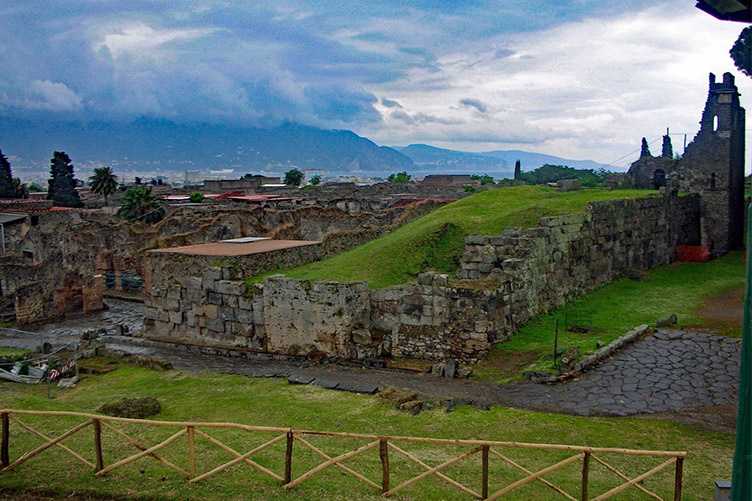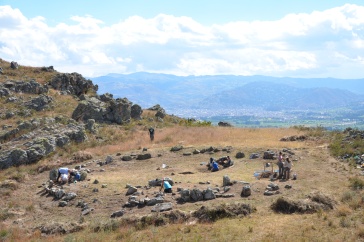
Ruins of the Vesuvius gate at Pompeii with the remains of a tower on the right.

The ancient fortifications of Pompeii did far more than protect from potential invaders, they symbolized the waves of social and political change that occurred throughout the history of the 700-year-old city. Ivo van der Graaff, UNH assistant professor of art history, explores this concept in his first book “The Fortifications of Pompeii and Ancient Italy,” published by Routledge Press in September 2018.
In his book, van der Graaff proposes that Pompeii’s fortifications served as a central monument that physically and symbolically shaped the city throughout its history. He looks at the internal and external forces that transformed their appearance and how they helped form a sense of community. His research concludes that the city wall was fundamental to the image and identity of Pompeii.
“My question (for the book) was, how does this monument that has essentially been around in various forms for 700 years influence and shape the city and people inside of it?” he says.
More than 10,500 feet (3,220 meters) long, the city wall surrounding Pompeii is 35 feet high, with towers that rise to more than 60 feet. They have a typical construction with a wall in front and an earthen mound in the back, making them about 60 feet wide. What’s interesting is that the fortifications were used in war only once — making them more an element of civic pride and a means of providing social control than an instrument of warfare, van der Graaff says.
Specific elements on the fortifications were decorated subtly. There is a juxtaposition between the construction materials and how masons finished the blocks composing the walls. Originally, this was thought to be the result of hasty construction and quick repairs. Instead, van der Graaff suggests that this construction was planned deliberately to create a visual unity to the city and add ornamental emphasis to its largest public monument. While the first circuit built does not have an identifiable donor, elite patrons later financed upgrades on individual gates as a means to flaunt their wealth and status as protectors of the community.
“City walls became symbolic elements of the city state. Everything that was displayed on a wall, not displayed, and who paid for individual elements on a wall — all of that carried a message,” van der Graaff says. “Many people view city walls as purely military structures, but I argue against that. Instead, they formed psychological reference points of an ‘us vs. them’ mentality. In that capacity, they served to separate communities from unwanted elements — but also to unite social groups who would put their wealth and most prized possessions behind the protection of a communal wall.”
Van der Graaff says the fortifications carried a clear ideological weight, reflected primarily in the frescoes, mosaics and inscriptions scattered in the houses of elite Pompeiians. This is because fortifications worked primarily as agents of social and economic control rather than in a singular military function.
“It’s critical to remember that they served to control everything and everyone who entered and left the city,” he says. “If we think about a modern comparison, the heated debate surrounding the construction of a wall on the southern U.S. border echoes similar issues of economic, political, and social division and identity.”
Fascination with fortifications and defenses as conceptual boundary markers inspired van der Graaff to write the book. Growing up in Italy and having lived in Europe during the time of the fall of the Berlin Wall, he says he’s always been interested in the development and long term role of public monuments in the formation of group identities and states, as well as their role in the spatial design and urbanization processes of ancient Italy.
Van der Graaff has participated in archeological research projects throughout Europe — including in the Netherlands, Belgium, Greece and Italy. He conducted much of his research for his book while working in Italy on the Oplontis project as director of excavations.
-
Written By:
Krysten Godfrey Maddocks '96 | College of Liberal Arts | krysten.godfreymaddocks@unh.edu

















































